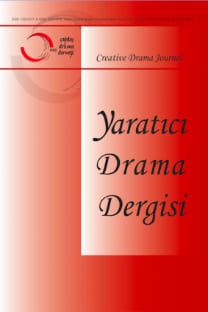Masallar ve Toplumsal Cinsiyet Rolleri Oluşturma Sürecine Katkıları
Masalların bir kültürün karakteristik özelliklerini yansıttıkları yaygın olarak bilinmektedir. Masallar, çocukları uykuya hazırlama, onların hayal güçlerini geliştirme ve toplumsal olarak kabul gören tutum ve davranışlar konusunda rehberlik etme işlevlerinin yanı sıra temel toplumsal kural ve normların gelecek nesillere aktarılması sürecinde de kritik bir rol oynamaktadır. Bu çalışmada, masalların toplumsal cinsiyet rollerinin oluşturulması ve aktarılması süreçlerine nasıl katkıda bulunduklarını inceleyen bir araştırma ortaya koymaya çalışıyorum. Daha spesifi k olarak, ortaya koyduğum bu soru toplumsal cinsiyet rollerinin aktarılması sürecinde masal anlatıcılarının belirleyiciliğini inceleme amacını taşımaktadır. Masalların hayatta kalmaları toplumsal olarak kabul görmelerine bağlı olduğundan bu soru bilimsel ilgiyi gerektirmekte ve araştırılmayı hak etmektedir. Diğer bir deyişle masalların belirli bir dönem içinde yeniden üretilmeleri gerekmektedir. Ayrıca bu yeniden üretim sürecini incelemek, toplumsal cinsiyet rollerinin oluşturulması ve aktarılmasını anlamak açısından kritik bir önem taşımaktadır. Bu çalışmanın hipotezleri, masal anlatıcıları olarak kadınların toplumsal cinsiyet rollerinin aktarılması sürecindeki belirleyiciliklerini incelemektedir.
Anahtar Kelimeler:
Toplumsal cinsiyet, Masallar, Masal anlatıcısı
Fairy Tales and Their Contribution to the Process of Constructing Gender Roles
As it is widely known that fairy tale refl ects the basic characteristics of a culture. Beside their functions such as preparing children for sleeping, to improve their imaginary, and guiding for the appropriate attitudes and behaviors; they have a critical role in the process of transferring basic rules and norms of the society to the next generations. In this paper, I would like to propose a study examining how fairy tales contribute to the process of constructing and transferring gender roles. More specifi cally, this proposed question aims to investigate the decisiveness of narrators of the fairy tales in the process of transferring gender roles. This question is worth studying and needs scientifi c attention since the survival of the fairy tale depends on social acceptance. In other words fairy tales are needed to be reproduced according to the needs of the society in that specifi c period. Additionally, examining reproduction process is critical to understand how gender roles are constructed and transferred. The hypotheses of this study examine decisiveness of women as the narrators of the fairy tales in the process of transferring gender roles.
Keywords:
Gender, Fairy tales, Narrator,
- ISSN: 1305-8177
- Başlangıç: 2006
- Yayıncı: Gençlik Kulübu ve Çağdaş Drama Derneği
Sayıdaki Diğer Makaleler
Kadınların “Toplumsal Cinsiyet” Algılarının Renkler ve Objeler Üzerinden İncelenmesi
Anadolu Kadınında Ezilmişliğin İtibarı
Çocuk Eğitimevindeki Kadın Görevlilerin Sanata Yönelik Görüşlerinin İncelenmesi
Edebiyat Eğitiminde Unutulmuş Kadın Yazarlar
Kadın Sığınmaevleri Olanak ve Sınırlılıkları
Eril Kadın, Dişil Erkek ve Gezi Ruhu
Yasemin SAĞLAM, Fatma Ebru ÖZEN
Nami Eren Beştepe, Tuba Çay Sağlam
Nami Eren Beştepe, Tuba Çay Sağlam
Kadınların “Toplumsal Cinsiyet” Algılarının Renkler ve Objeler Üzerinden İncelenmesi
